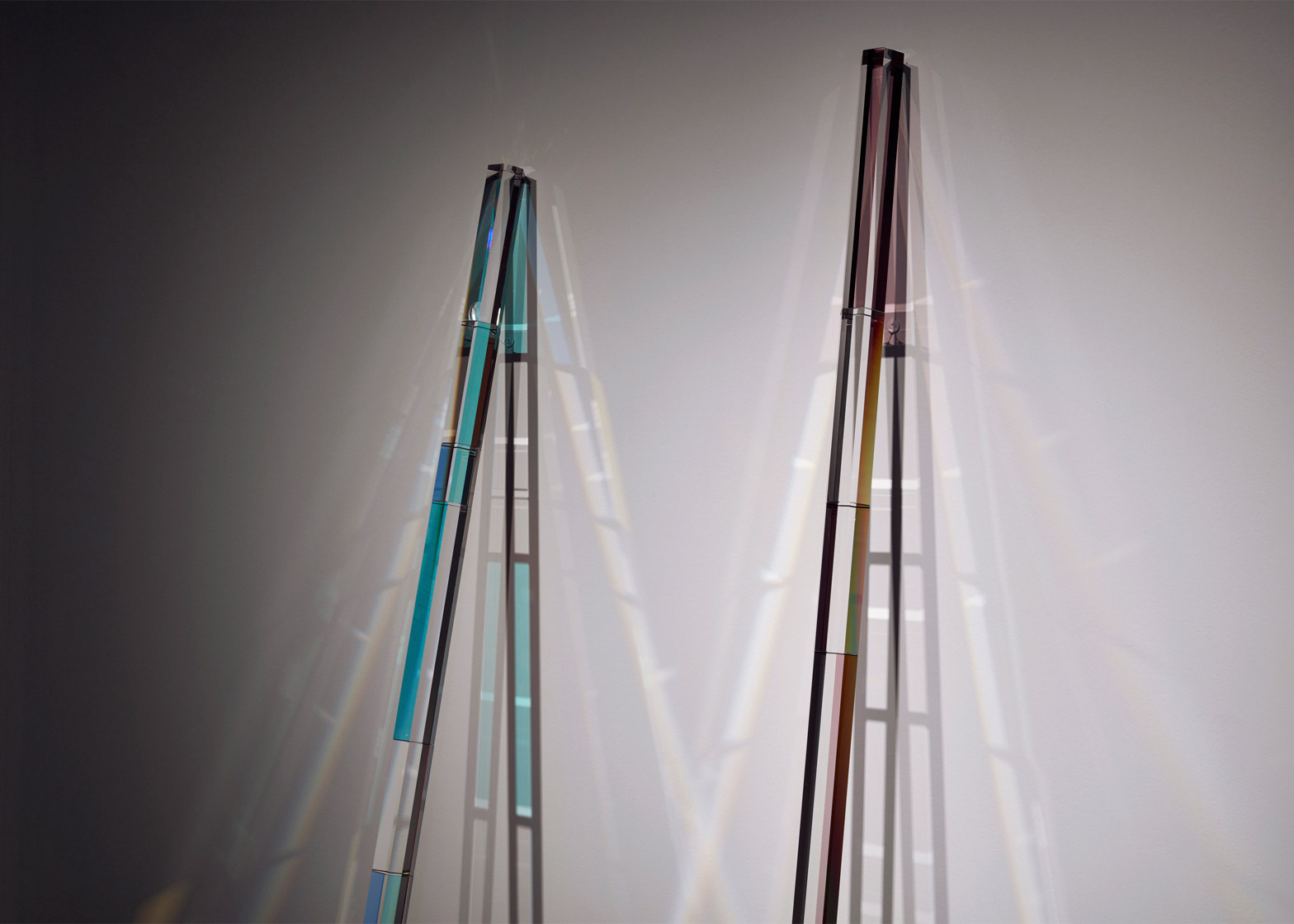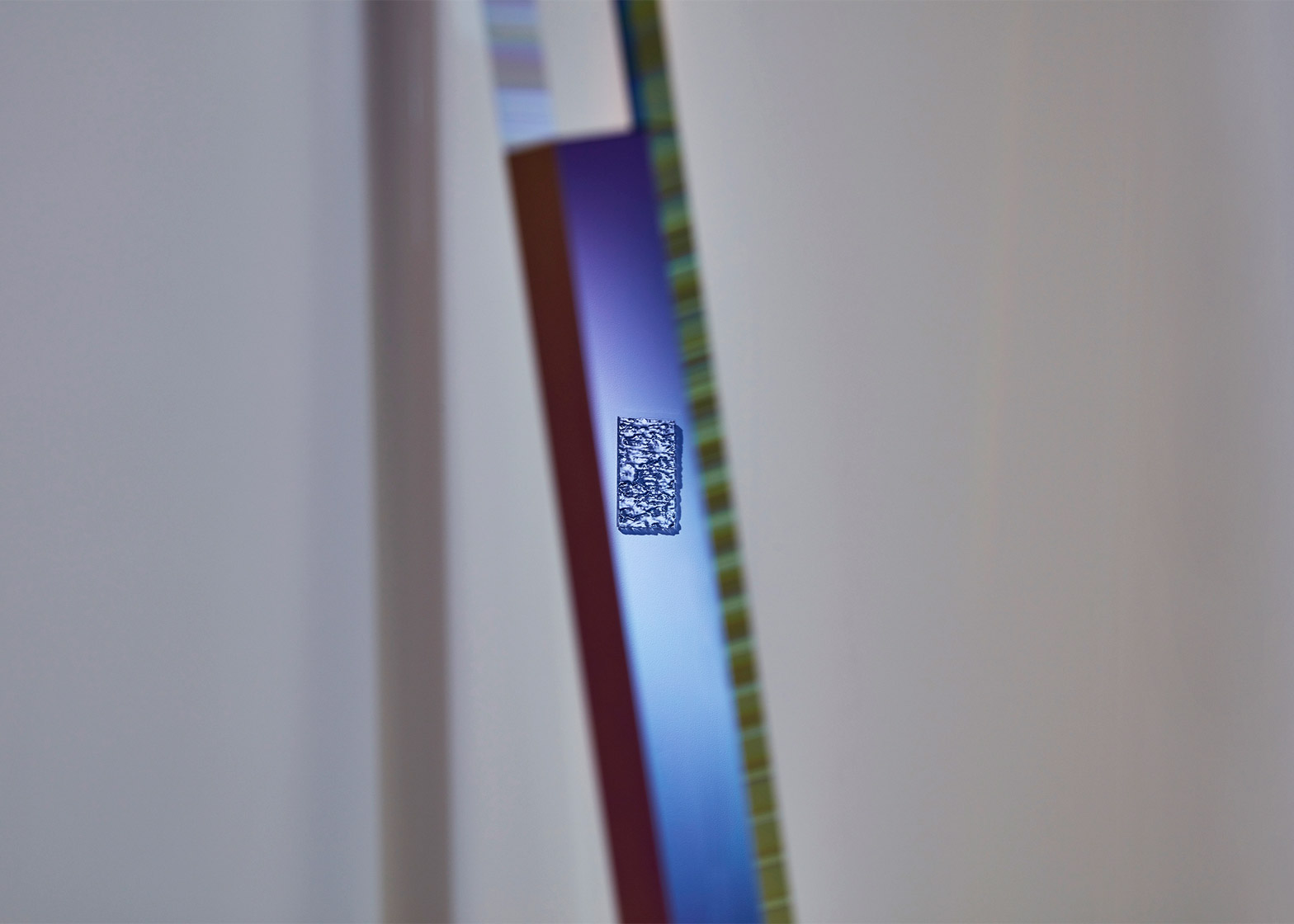Design Miami/Basel 2016: an interactive wave of tiles and a crystallophone are among the 2016 Swarovski Designers of the Future Award commissions, revealed yesterday at Design Miami/Basel (+ slideshow).
Now in its ninth year, the Designers of the Future Award gives up-and-coming designers the opportunity to create innovative new works.
This year's laureates are Anjali Srinivasan, Studio Brynjar & Veronika and Yuri Suzuki, whose wins were announced at Maison et Objet in Paris earlier this year.
They were tasked with interpreting the theme of "betterment", combining Swarovski crystals and new technologies.
Srinivasan created an undulating wave of interactive tiles, Suzuki produced a musical instrument that makes sound by tapping crystals, and Studio Brynjar & Veronika designed crystal blinds that cast rainbows when hit by the sun.
Srinivasan's work, titled Unda, involved developing a special, touch-sensitive crystal tile together with Swarovski.
Described as "an architectural surface for crystal drawing", Unda responds to human touch by lighting up the area of contact. The light slowly fades when contact stops, creating the effect of a trail of illumination that appears to follow the movement of a person's hand.
Anjali Srinivasan explains the concept behind her 2016 Swarovski Designers of the Future Award commission. Video by Laura Bushell
"Crystal is a highly engaging material because it is a solid object that creates visual effects that you cannot touch," said Srinivasan.
Measuring six metres in length, Unda encompasses 1,500 of the interactive touch crystals at the crest of the wave, as well as 3,000 Swarovski crystals and 5,000 glass pieces blown in Srinivisan's Dubai studio.
A spectrum of whites, blues, greens and earthy golds unfurls along the sculpture's surface as the touch crystals blend into Srinivisan's glass, representing the transition from glass into crystal.
"I'm hoping that people have two levels of interaction," said Srinivisan. "The first is looking at the different textures and noticing the transition through it."
"The second is that I want people to have a vision of what it is to make something better by touching something – you animate something because you bless it with your presence."
Suzuki's sculpture for the commission, titled Sharevari, is also interactive. It is a mechanical crystallophone, which means it produces sound through the vibration of crystals.
Yuri Suzuki explains the concept behind his 2016 Swarovski Designers of the Future Award commission. Video by Laura Bushell
It consists of 16 brass podiums arranged in a semi-circle. Each holds a crystal of a different size, ranging from 95 to 250 millimetres in diameter, which determines the note that is produced when the crystal is struck by brass hammers.
As well as playing Suzuki's own programmed compositions, Sharevari can be "conducted" by audience members by way of a network of sensors.
Suzuki is known for his interactive sound works, which have previously included White Noise Machines that transform and distort people's voices and robots that turn coloured scribbles into music.
The third Swarovski Designers of the Future Award commissions are three pieces collectively titled Currents by Studio Brynjar & Veronika. These play with the interaction between crystals and light.
Thirty specially created prismic slats form a fully functioning blind that produces rainbow patterns when struck by light.
The studio also created decorative crystal sticks that cast coloured shadows, and an arrangement of liquid-seeming crystal tiles made using a 3D scan of water.
All of the designers visited Swarovski's historical base in Wattens, Austria, and were given access to the crystal manufacturer's archives, design teams and technology development programs.
Last year's Designers of the Future Award commissions included a set of tools for exploring a fictional crystal planet and a set of interactive jellyfish-shaped forms.
Design Miami/Basel runs from 14 to 16 June 2016. Dezeen's picks of the highlights of the collector's fair include a six-tonne stone meditation space, a modular armadillo and an exhibition of designs by Zaha Hadid.
Photography is by Mark Cocksedge.


















